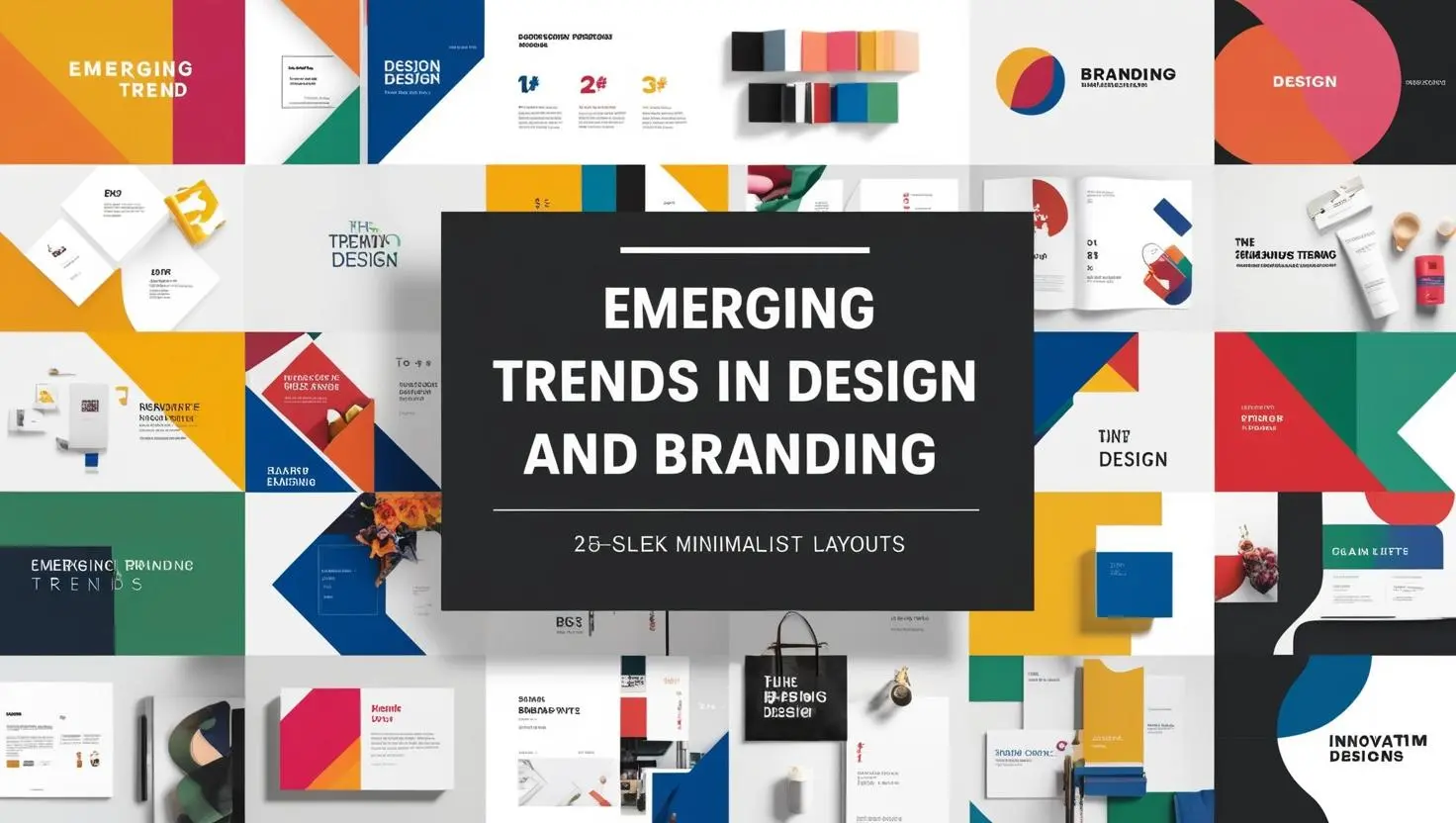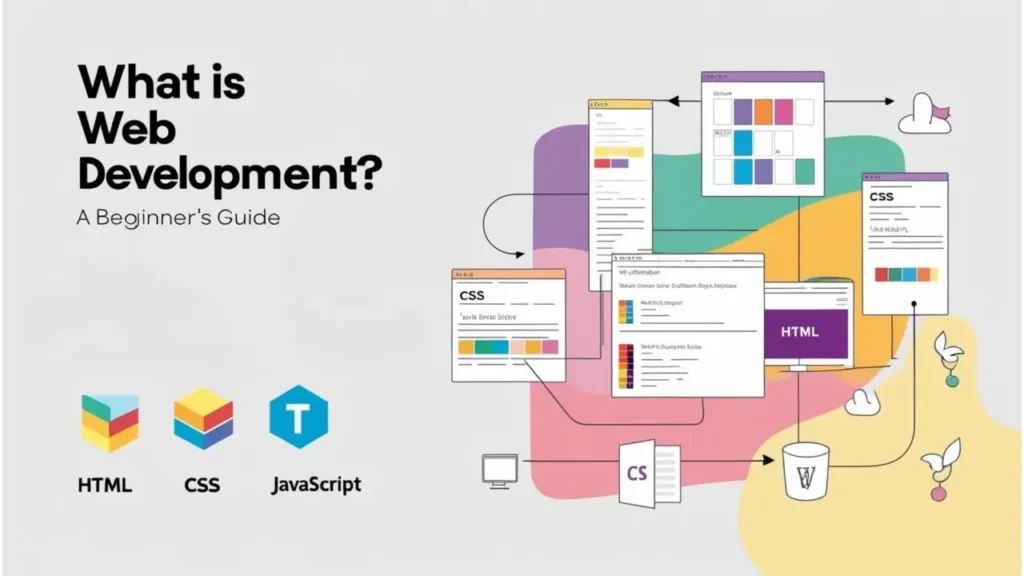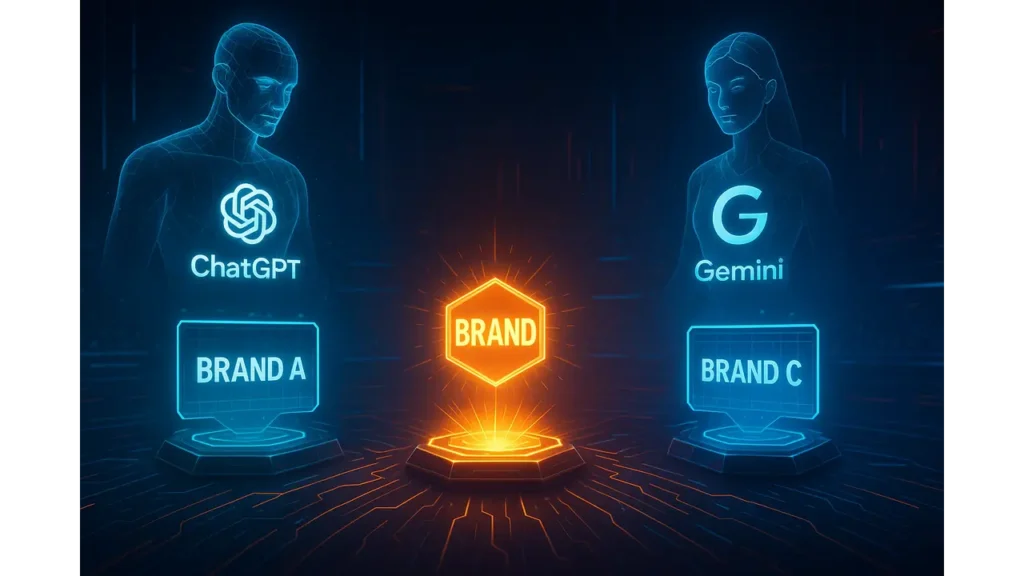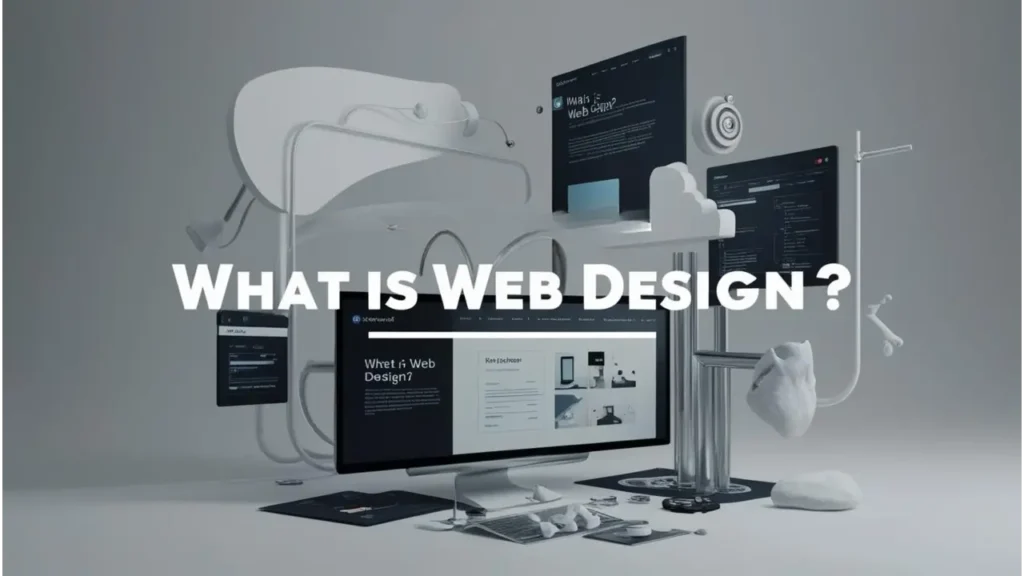In the fast-evolving world of design and branding, staying ahead of the curve is essential for businesses to remain relevant and competitive. Branding is no longer just about a logo or a tagline—it’s about creating an identity that resonates with consumers on a deeper level. As we move into an era of heightened environmental awareness, technological advancements, and changing aesthetic preferences, three key trends are shaping the future of branding: sustainability, minimalist design, and the integration of AI into creative processes.
This article explores these emerging trends, providing insights and actionable strategies to help businesses align their branding efforts with these modern developments.
Key Takeaways
- Sustainability is a must: Modern consumers demand eco-friendly practices. Integrating sustainability into your branding fosters trust and loyalty.
- Minimalist design enhances clarity: Simplifying your visuals with clean layouts and focused messaging aligns with current design trends and improves usability.
- AI is transforming branding: From generative design tools to hyper-personalized experiences, AI enables brands to streamline workflows and engage audiences more effectively.
- Adaptability is essential: Staying competitive requires embracing emerging trends like sustainability, minimalism, and AI while aligning them with your unique brand identity.
- WODO can help: With expertise in sustainable practices, minimalist design, and AI-powered solutions, WODO ensures your brand stays ahead in a dynamic marketplace.
Table of Contents
The Changing Landscape of Design and Branding
Why Branding Must Evolve
Branding, once limited to logos, slogans, and advertisements, has evolved into a comprehensive identity system that communicates a company’s values, mission, and purpose. This evolution is driven by rapid changes in consumer behavior, technological advancements, and global challenges. In today’s competitive market, branding must go beyond aesthetics to create genuine connections with its audience.
Consumers are more informed and selective than ever, seeking brands that align with their values. They no longer want to engage with companies that only sell products; they demand meaningful relationships with businesses that stand for something. As a result, branding has become a dynamic process, constantly adapting to societal shifts and market demands.
Key Drivers of Branding Evolution:
- Consumer Awareness and Demands:
- Consumers today prioritize brands that are authentic, transparent, and ethical.
- Gen Z and Millennials, in particular, prefer brands that address social, environmental, and cultural issues.
- Technological Disruption:
- Digital tools and AI have transformed how brands design, communicate, and engage with audiences.
- Personalization, automation, and real-time interactions are now critical for brand success.
- Cultural and Global Influences:
- Issues like climate change, social justice, and economic inequality influence consumer expectations.
- Brands that reflect these priorities in their strategies stand out in crowded markets.
What’s Driving Branding Trends Today?
The modern branding landscape is shaped by three major forces:
- Environmental Responsibility:
- With the climate crisis dominating global conversations, consumers expect brands to adopt sustainable practices.
- A study by Nielsen revealed that 73% of global consumers are willing to change their consumption habits to reduce environmental impact.
- Digital-First Experiences:
- As more interactions happen online, branding needs to prioritize digital usability and accessibility.
- From social media to e-commerce platforms, consistency across digital touchpoints is essential for brand recognition.
- Technological Innovation:
- AI-powered tools are streamlining design workflows, enabling hyper-personalized content and automating repetitive tasks.
- Emerging technologies like augmented reality (AR) and virtual reality (VR) are redefining how brands create immersive experiences.
Brands that embrace these changes are better equipped to meet evolving consumer expectations and build lasting loyalty.

Sustainability in Branding
The Importance of Eco-Friendly Practices
Sustainability has moved from being a niche concern to a central expectation in branding. Consumers are increasingly aligning their purchasing decisions with brands that demonstrate environmental responsibility. Sustainability in branding is about more than using green colors or adding a “recyclable” label—it’s about integrating eco-consciousness into every aspect of a business’s operations and messaging.
Why Sustainability Matters:
- Rising Consumer Awareness:
- A report by IBM shows that nearly 57% of consumers are willing to change their shopping habits to reduce environmental impact.
- Consumers are holding brands accountable for their carbon footprints, supply chain ethics, and resource management.
- Competitive Advantage:
- Sustainable branding isn’t just good ethics—it’s good business.
- Brands that adopt eco-friendly practices often gain a competitive edge, especially among environmentally conscious demographics like Millennials and Gen Z.
- Regulatory Changes:
- Governments worldwide are introducing stricter regulations on sustainability, from banning single-use plastics to imposing carbon taxes.
- Brands that proactively adapt to these changes can position themselves as industry leaders.
Examples of Sustainable Branding Strategies
- Eco-Friendly Packaging:
- Brands like Lush have embraced sustainable packaging, offering “naked” products (without packaging) and compostable wrapping.
- Patagonia uses recycled and organic materials in both its products and packaging, showcasing a commitment to reducing waste.
- Carbon-Neutral Commitments:
- IKEA aims to become climate-positive by 2030, committing to reducing more greenhouse gas emissions than its value chain emits.
- Microsoft has pledged to be carbon-negative by 2030 and is actively investing in carbon removal technologies.
- Storytelling Through Sustainability:
- Starbucks communicates its efforts to reduce waste and increase the use of reusable cups through marketing campaigns that resonate emotionally with eco-conscious consumers.
- The Body Shop shares its sustainable sourcing stories, showcasing how its ingredients are ethically harvested and community-friendly.
- Product Innovation:
- Brands are increasingly designing products with sustainability in mind, such as Adidas creating sneakers made from ocean plastic or Everlane producing apparel with transparency about their environmental impact.
How to Incorporate Sustainability Into Your Branding
- Evaluate Your Supply Chain:
- Identify areas where you can reduce waste, improve energy efficiency, or source materials more sustainably.
- Partner with suppliers that share your eco-conscious values.
- Communicate Your Efforts:
- Transparency is key. Share your sustainability initiatives with your audience through blogs, videos, and social media.
- Be honest about your journey—highlight progress but acknowledge areas for improvement.
- Certifications and Labels:
- Earn and display certifications like Fair Trade, LEED, or CarbonNeutral to validate your sustainability claims.
- Engage Your Audience:
- Involve customers in your sustainability journey by encouraging them to recycle, use eco-friendly products, or participate in community programs.
- For example, brands like Levi’s encourage customers to bring in old jeans for recycling in exchange for store credit.
Sustainability is not just a trend—it’s an integral part of modern branding. Brands that lead with eco-consciousness not only help protect the planet but also build trust and loyalty with their audiences, positioning themselves as forward-thinking and responsible.
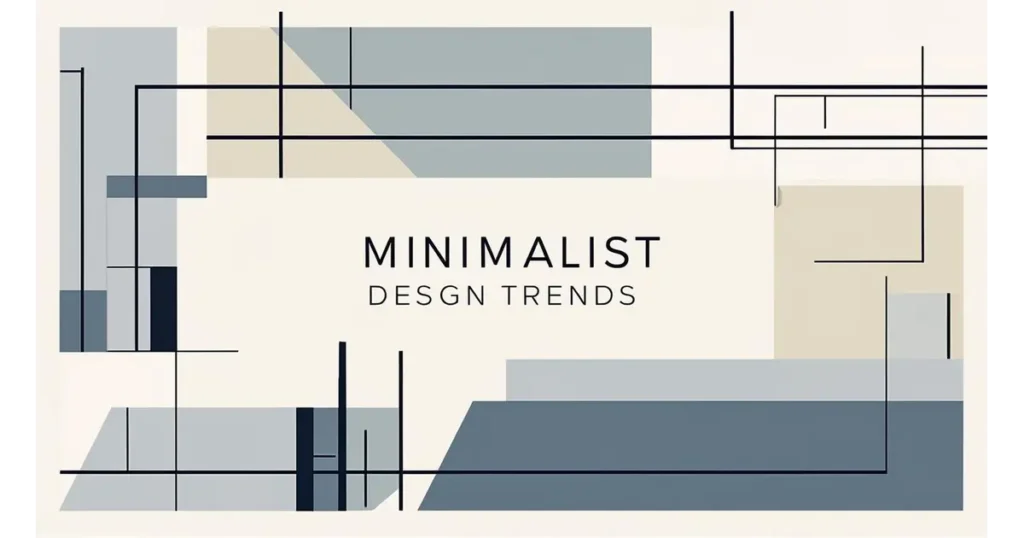
Minimalist Design Trends in Branding
Key Principles of Minimalism
Minimalist design has become a hallmark of modern branding, focusing on simplicity and clarity to deliver impactful messages. As consumers are bombarded with information daily, minimalist design provides a refreshing sense of focus and ease. By removing unnecessary elements, minimalist branding allows the core message to shine, creating stronger emotional connections and enhancing usability.
Core Principles of Minimalist Design:
- Simplicity:
- Use only essential elements in design, ensuring the audience isn’t overwhelmed.
- Prioritize clean layouts with structured visual hierarchies.
- White Space:
- Strategic use of negative space emphasizes important design elements, guiding the user’s attention.
- It creates a sense of balance and elegance in the design.
- Typography as a Design Tool:
- Choose functional, legible fonts that align with the brand’s tone.
- Pairing simple typefaces with creative layouts enhances the visual appeal without overwhelming the viewer.
- Limited Color Palettes:
- Minimalist branding typically uses two to three complementary colors, avoiding unnecessary complexity.
- The restrained use of color enhances visual clarity and makes designs feel timeless.
Why Minimalism Resonates with Modern Audiences
The rise of minimalist design reflects shifting consumer preferences toward functionality, aesthetics, and purpose. In a world where digital content is ubiquitous, minimalism offers a clean, calming counterbalance.
- Digital Usability:
- Minimalist design works exceptionally well in digital interfaces. Clean layouts load faster, enhance readability, and reduce user frustration.
- For example, a minimalist website reduces distractions, allowing visitors to focus on the core message or call-to-action.
- Aesthetic Appeal:
- The sleek, modern appearance of minimalist branding appeals to tech-savvy and design-conscious audiences.
- It evokes sophistication and professionalism, qualities often associated with premium brands.
- Cognitive Relief:
- Consumers today face decision fatigue from excessive information. Minimalist design reduces cognitive load, making interactions intuitive and enjoyable.
- Focus on Brand Values:
- Minimalism strips away visual clutter, highlighting the brand’s essence and core values.
- This approach fosters authenticity and trust, aligning with modern consumers’ desire for genuine connections.
Examples of Minimalist Design in Action
- Apple:
- Apple’s branding is synonymous with minimalism, from its product designs to its marketing campaigns.
- By using clean visuals, minimalist typography, and uncluttered layouts, Apple communicates innovation and sophistication.
- Airbnb:
- Airbnb’s logo and website design embody minimalism, using simple visuals and user-friendly interfaces to enhance the customer experience.
- Google:
- Google’s minimalist homepage is iconic. By eliminating unnecessary elements, the design ensures users can focus entirely on the search functionality.
- Muji:
- The Japanese brand Muji is a pioneer in minimalist branding, focusing on clean packaging, neutral tones, and understated designs to reflect its “no-brand” philosophy.
Minimalism isn’t just a design trend—it’s a philosophy that aligns with modern consumer values, such as efficiency, clarity, and authenticity. Brands that embrace minimalist design create stronger, longer-lasting impressions.
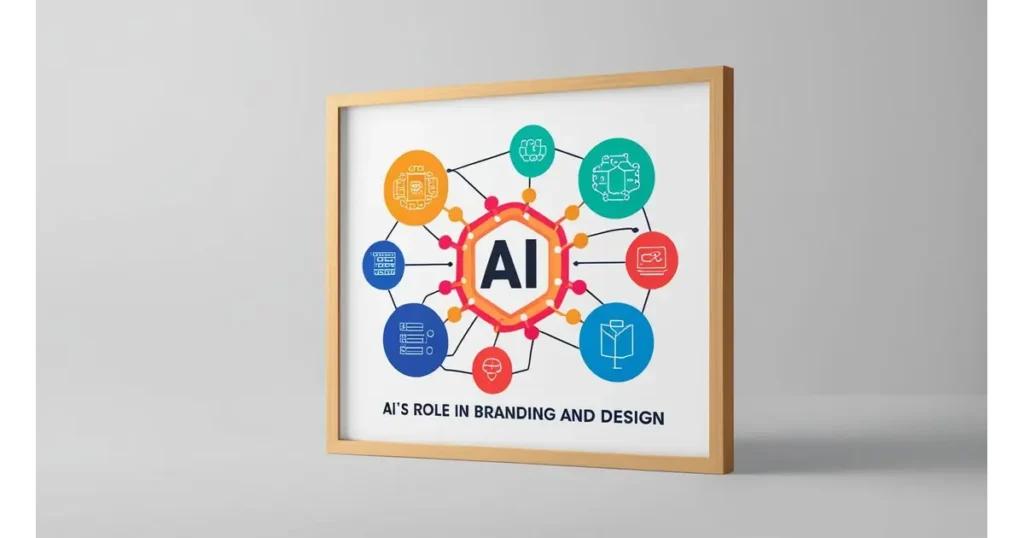
AI in Branding and Design
AI’s Role in Personalization and Creativity
Artificial Intelligence (AI) is revolutionizing the branding and design landscape by enabling unprecedented levels of personalization, efficiency, and creativity. With AI, brands can analyze data, predict trends, and create customized content that resonates with individual consumers—all while streamlining workflows and reducing production times.
How AI Transforms Branding:
- Hyper-Personalization:
- AI tools analyze user behavior, preferences, and demographics to deliver tailored experiences.
- For example, Spotify’s “Discover Weekly” playlists use AI to curate personalized music recommendations, enhancing user engagement and brand loyalty.
- Streamlined Design Processes:
- AI-driven tools like Canva and Adobe Sensei automate repetitive tasks, allowing designers to focus on creative aspects.
- Generative AI creates logos, banners, and marketing materials quickly and efficiently.
- Content Automation:
- AI platforms like ChatGPT generate high-quality copy for blogs, social media posts, and advertisements in minutes.
- By automating content creation, brands can maintain consistency and scale their marketing efforts.
- Trend Prediction:
- AI algorithms can analyze market trends and consumer behavior to identify emerging preferences.
- This data allows brands to stay ahead of the curve and adapt their strategies proactively.
Examples of AI Tools for Branding
AI tools have made branding accessible and efficient for businesses of all sizes. Here are some popular examples:
- Canva:
- Canva uses AI to help users design professional-quality graphics, even without prior experience.
- Features like drag-and-drop interfaces and pre-made templates streamline the branding process for small businesses.
- Adobe Sensei:
- Integrated into Adobe’s Creative Cloud, Sensei uses AI to enhance design workflows.
- It automates tasks like resizing images, identifying optimal layouts, and offering creative suggestions.
- ChatGPT:
- This AI-powered language model generates engaging copy for a variety of branding needs, from taglines to long-form articles.
- Brands can use ChatGPT to create content that aligns with their tone and voice.
- Logojoy (Now Looka):
- Looka combines AI with user input to generate custom logos in minutes, offering an affordable alternative to traditional design services.
The Challenges of Relying on AI Alone
While AI offers significant advantages, it’s not without limitations. Brands must be mindful of the following challenges:
- Lack of Emotional Nuance:
- AI struggles to capture the emotional depth and cultural nuances that resonate with audiences.
- Human oversight is crucial to refine AI-generated outputs and ensure they align with the brand’s values.
- Risk of Homogeneity:
- Relying too heavily on AI can lead to generic designs and content that lack originality.
- Combining AI with human creativity ensures unique, impactful branding.
- Data Privacy Concerns:
- AI-driven personalization relies on extensive user data, raising privacy and ethical considerations.
The Future of AI in Branding
AI is not a replacement for human creativity but a powerful tool that complements it. The future of branding will see greater collaboration between AI and human designers, allowing brands to deliver innovative, personalized, and efficient solutions.
By leveraging AI responsibly, businesses can unlock new possibilities in design and branding, creating memorable experiences that resonate with modern consumers.
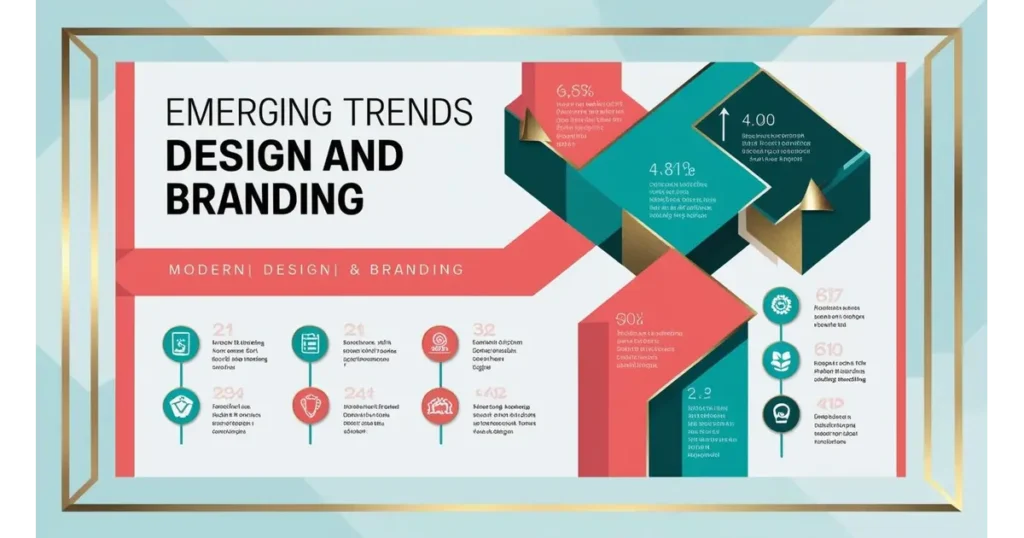
Integrating Emerging Trends into Your Branding Strategy
To stay competitive in an ever-evolving market, businesses must adapt their branding strategies to incorporate sustainability, minimalist design, and AI-driven innovation. Successfully integrating these trends requires a deliberate and well-structured approach that aligns with your brand’s identity and values.
1. Adopting a Sustainable Approach
Sustainability is more than a trend—it’s a commitment to operating responsibly and ethically. To integrate sustainability into your branding:
- Evaluate Your Supply Chain:
- Assess how materials, production, and delivery methods impact the environment.
- Partner with eco-friendly suppliers and adopt practices that reduce waste and emissions.
- Communicate Your Initiatives:
- Share your sustainability efforts with your audience. Transparency builds trust and loyalty.
- Use storytelling to highlight how your brand contributes to positive environmental change.
- Certify Your Efforts:
- Certifications like Fair Trade, CarbonNeutral, and FSC add credibility to your claims.
- Display these certifications on your website and packaging to reassure eco-conscious consumers.
- Engage Consumers in Sustainability:
- Create campaigns that involve your audience, such as encouraging recycling or supporting community clean-ups.
- Patagonia, for example, invites customers to repair or recycle their products, strengthening their sustainability narrative.
2. Incorporating Minimalist Design
Minimalist design is about focusing on what matters most—your core brand message. Here’s how to adopt minimalist principles:
- Audit Your Current Branding:
- Identify cluttered or redundant design elements and eliminate them.
- Simplify your logos, website, and marketing materials for a cleaner look.
- Create Consistent Visuals:
- Use a limited color palette and consistent typography across all brand touchpoints.
- For example, brands like Airbnb and Google use cohesive, recognizable designs to enhance their identity.
- Focus on User Experience (UX):
- Streamline your website and apps to prioritize navigation and usability.
- Incorporate white space and clean layouts to guide users to key messages or actions.
- Highlight Core Values:
- Use minimalism to draw attention to your brand’s mission, vision, or value propositions.
- For example, Apple’s advertising campaigns often emphasize a single product feature or benefit, creating a memorable impact.
3. Leveraging AI for Efficiency and Creativity
AI tools have transformed the creative process, enabling brands to streamline workflows, deliver personalized experiences, and improve design efficiency. To integrate AI into your strategy:
- Invest in AI Tools:
- Tools like Canva, Adobe Sensei, and ChatGPT help automate repetitive tasks and improve productivity.
- For example, AI can generate initial design drafts or marketing copy, allowing your team to focus on refinement.
- Use Data-Driven Insights:
- AI can analyze consumer behavior and preferences, providing actionable insights to guide your branding decisions.
- Personalization tools like Dynamic Yield allow you to tailor experiences for individual users.
- Enhance Creative Workflows:
- AI-powered design tools can suggest layouts, color schemes, and typography, speeding up the creative process.
- Platforms like Looka help create logos quickly, combining user input with AI-generated designs.
- Experiment with Emerging Tech:
- Explore technologies like augmented reality (AR) and virtual reality (VR) to create immersive branding experiences.
- For instance, IKEA’s AR app allows users to visualize furniture in their space, enhancing customer engagement.
How WODO Can Elevate Your Design and Branding Strategy
At WODO, we specialize in helping businesses stay ahead of emerging trends in design and branding. With expertise in sustainability, minimalist design, and AI-driven solutions, our team delivers innovative strategies tailored to your unique needs.
Our Approach to Design and Branding
1. Sustainability-Centric Branding:
- We integrate eco-conscious practices into your branding strategy, from sustainable materials to transparent communication about your efforts.
- Our team helps position your brand as a leader in environmental responsibility, aligning with consumer expectations.
2. Minimalist Design Solutions:
- WODO creates visually appealing, functional designs that resonate with modern audiences.
- Whether it’s a sleek website, intuitive app interface, or simplified logo, we ensure that every element reflects your brand’s core values.
3. AI-Powered Creativity:
- By leveraging advanced tools like generative AI and machine learning, we optimize your creative workflows, making design faster and more efficient.
- From personalized content to automated branding assets, we use AI to create impactful, scalable solutions.
What Sets WODO Apart
- Tailored Strategies:
- We believe in customization. Every branding solution we create is designed to fit your specific goals, industry, and audience.
- Expert Insights:
- With a team of experienced designers, marketers, and strategists, WODO combines creativity and data-driven insights to deliver measurable results.
- Comprehensive Services:
- Our design and branding offerings include logo design, website creation, packaging, marketing materials, and more, ensuring consistency across all touchpoints.
- Client-Centric Collaboration:
- At WODO, we work closely with our clients, ensuring that your vision and values are reflected in every project.
Explore Our Services
Discover how WODO can transform your brand through our wide range of services:
- Brand Identity Design: Develop a strong visual identity, including logos, color schemes, and typography, that reflects your brand’s personality.
- Website and UX Design: Create intuitive, user-friendly websites and applications optimized for engagement and conversions.
- Sustainability Integration: Incorporate eco-friendly strategies into your branding and storytelling to connect with conscious consumers.
- AI-Driven Content and Design: Leverage AI tools to generate personalized content, automate workflows, and stay ahead in the digital landscape.
Why Partner with WODO?
At WODO, we understand that the branding landscape is constantly changing. Our commitment to innovation ensures that your brand not only adapts to emerging trends but thrives in a competitive market. From concept to execution, we bring your vision to life with strategies that are modern, effective, and aligned with your goals.
Ready to elevate your brand? Visit our Design and Branding Services page or explore actionable tips on our Insights page. Let’s create something extraordinary together.
FAQs
Why is sustainability important in branding?
Sustainability builds trust with eco-conscious consumers by showing that your brand cares about the environment. It also meets regulatory demands and strengthens your competitive advantage.
What are the benefits of minimalist design?
Minimalist design enhances clarity, usability, and aesthetic appeal. It helps brands focus on their core values, creating stronger connections with their audience.
How can small businesses use AI in branding?
Small businesses can use affordable AI tools like Canva and ChatGPT to create professional-quality graphics, generate content, and personalize customer experiences without large budgets.
What’s the best way to start integrating these trends?
Begin with an audit of your current branding strategy. Identify areas where you can adopt sustainability, simplify your designs, or leverage AI tools to enhance efficiency and creativity.
What challenges might arise when adopting these trends?
Challenges include balancing creativity with automation, ensuring sustainability efforts are authentic, and maintaining brand consistency across minimalist designs.
Conclusion
The future of branding is being shaped by three transformative trends: sustainability, minimalist design, and AI integration. These trends reflect the changing values and preferences of modern consumers, who demand brands that are environmentally responsible, visually appealing, and technologically innovative.
To remain competitive, businesses must adapt their branding strategies by:
- Embracing sustainability in materials, practices, and messaging.
- Simplifying their designs to enhance usability and focus on core messages.
- Leveraging AI tools to streamline workflows and create personalized experiences.

